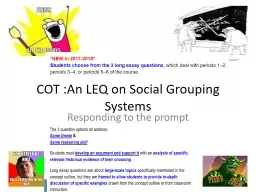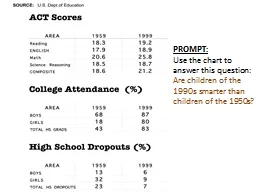PPT-Responding to the prompt
Author : gristlydell | Published Date : 2020-06-25
COT An LEQ on Social Grouping Systems Strengths Most got their regions right Most got their periodizations right Most a basic core theses Most had at least 5 pieces
Presentation Embed Code
Download Presentation
Download Presentation The PPT/PDF document "Responding to the prompt" is the property of its rightful owner. Permission is granted to download and print the materials on this website for personal, non-commercial use only, and to display it on your personal computer provided you do not modify the materials and that you retain all copyright notices contained in the materials. By downloading content from our website, you accept the terms of this agreement.
Responding to the prompt: Transcript
Download Rules Of Document
"Responding to the prompt"The content belongs to its owner. You may download and print it for personal use, without modification, and keep all copyright notices. By downloading, you agree to these terms.
Related Documents














